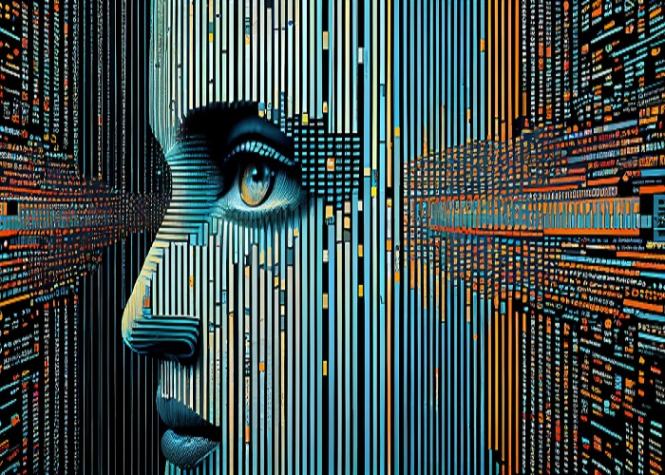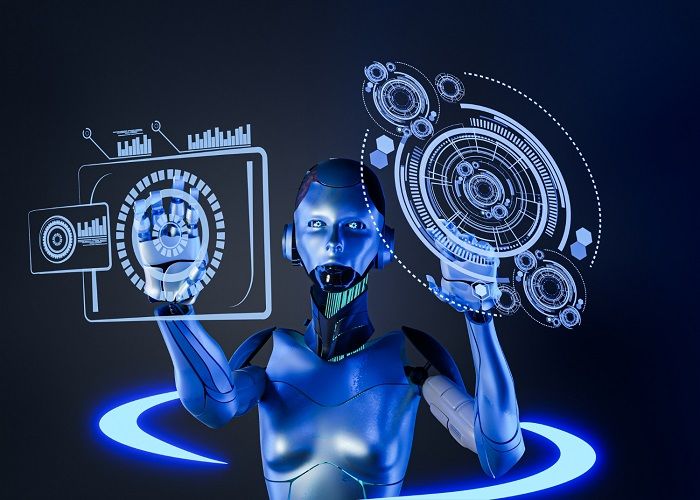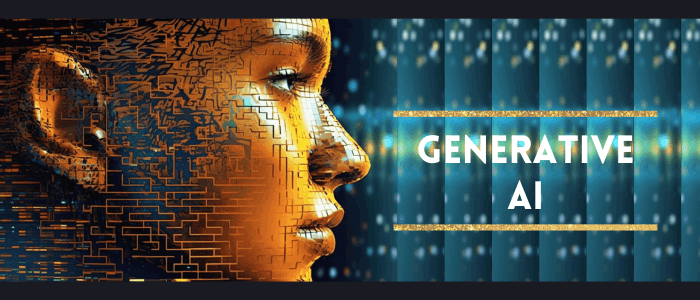Generative AI is at the forefront of the digital age – where machines don’t just crunch numbers but also paint, write, and compose music! Imagine a world where AI isn’t just a set of algorithms; it’s a creative genius, a muse for human innovation. Today, we’re stepping into the fascinating world of generative AI, the future of creativity and innovation. So, buckle up because the AI rollercoaster is about to take you on a wild, imaginative ride!
What Is Generative AI?
What’s the buzz about generative AI, you ask? Well, it’s like having a digital Da Vinci or a silicon Shakespeare. Generative AI is the technology that enables machines to create content—be it art, music, or even literature—autonomously. It’s not just about crunching numbers or sorting data; it’s about producing original, human-like content. But how does it work, you wonder?
Generative AI is a subset of artificial intelligence that is all about creating stuff, much like an artist or a writer. It uses neural networks, a kind of AI architecture inspired by the human brain, to generate content. These networks can be trained on mountains of data to learn patterns and styles, and then they can generate content that mirrors what they’ve learned.
How Does Generative AI Work?
Generative AI relies on neural networks, which are computational models inspired by the human brain’s structure and functioning. These networks, particularly deep learning models, learn to understand and replicate patterns and styles from vast amounts of data. They can then use this knowledge to generate new content. Here’s a breakdown of how it works:
Training Data: To teach generative AI, you need tons of data. For example, if you want to create an AI for writing, you’d feed it a colossal amount of text, like books, articles, and websites.
Neural Network: The core of generative AI is a neural network, which processes and understands this training data. These networks consist of interconnected nodes that mimic the human brain’s neurons. Each node processes information and passes it to the next, ultimately generating new content.
Pattern Recognition: During training, the neural network identifies patterns, relationships, and structures in the data. For example, in the case of a generative AI for writing, it might learn how sentences are structured, what words are commonly used together, and the nuances of grammar and style.
Content Generation: Once trained, the neural network can take a prompt or input and generate content based on what it has learned. For instance, you could give it the start of a sentence, and it will complete it in a way that matches the style and structure it learned from the training data.
Fine-Tuning: AI models can be fine-tuned for specific tasks. For example, you could fine-tune a generative AI for creative writing to mimic the style of a famous author or for specific industries, like marketing or legal documents.
Examples of Generative AI in Use Today
Generative AI is changing the way we create, communicate, and innovate. It’s like having a digital companion who’s always ready to assist with tasks that require creativity and human-like understanding and it is all around us, and you might not even realize it. Here are some everyday examples:
- Chatbots: Ever had a conversation with a customer support bot that felt eerily human-like? Many of them use generative AI to understand and respond to your questions.
- Content Generation: News organizations and marketers use AI to create articles, product descriptions, and even marketing campaigns.
- Art and Design: AI can generate art, designs, and even logos. It’s like having an AI-driven Picasso at your service.
- Language Translation: Translation services like Google Translate use generative AI to convert text from one language to another.
- Code Generation: Developers can use AI to write code or help them with software development.
The Potential Impact of Generative AI on Creativity and Innovation
So, what’s the big deal about generative AI? It’s all about unleashing the power of human creativity. It can help artists create new masterpieces, musicians compose symphonies, and writers craft bestsellers. But it’s not just about art; it can also spark innovation in various industries, from healthcare to marketing. The possibilities are as vast as the digital universe itself.
1. Generative AI for Creativity
Now get ready, because we’re diving deep into the realm of generative AI for creativity. It’s like having an endless source of inspiration at your fingertips:

a. Art and Design: This AI can create art that rivals the works of famous painters. It’s not about replacing artists but providing them with new tools to spark their creativity. Imagine having Picasso’s art style at your command or even a fusion of multiple artists’ styles in a single piece.
b. Music Composition: Ever dreamt of composing a symphony but couldn’t read a single note? Generative AI can be your musical maestro, generating beautiful compositions in the style of your favorite musicians. It’s like having your own Beethoven or Bach in your creative orchestra.
c. Writing and Storytelling: This AI is a writer’s glory; it can assist in generating content for various purposes, from news articles to marketing copy. It’s like having a personal ghostwriter, always ready to help you express your thoughts and ideas eloquently.
d. Video and Film Production: The film industry is on the brink of an AI-powered revolution. From generating special effects to helping scriptwriters brainstorm new ideas, generative AI is transforming how movies are made.
2. Generative AI for Innovation
Now, let’s talk about how generative AI is the catalyst for innovation in various fields. It’s like having a brilliant inventor as your assistant:

a. Healthcare: AI is helping doctors diagnose diseases more accurately and discover new treatment options. It’s like having a digital medical Sherlock Holmes unraveling complex medical mysteries.
b. Marketing and Advertising: Marketers are using this AI to create compelling ad copy and design. It’s like having a 24/7 creative team brainstorming ideas to capture your audience’s attention.
c. Product Design: From designing better car engines to creating ergonomic furniture, generative AI is transforming the world of product design. It’s like having an infinite number of design concepts at your disposal.
d. Scientific Research: Scientists are also using this AI to simulate experiments and discover new materials. It’s like having a digital lab assistant, speeding up the pace of scientific discovery.
Conclusion
The future of AI is bright, and it’s not just about convenience or automation. It’s about unlocking the creative potential within all of us. But, as with any powerful tool, generative AI comes with ethical considerations. Ensuring that AI is used responsibly and that the rights of artists and creators are protected, is essential.
The possibilities for generative AI are limitless. It’s like having a genie that can grant an infinite number of wishes. As technology continues to advance, we can expect this AI to become an even more integral part of our creative and innovative processes.
Following this, Using generative AI responsibly means addressing ethical concerns. Who owns the content created by AI? How can we prevent misuse, such as deepfake videos or plagiarized content? These are questions that we must grapple with as generative AI becomes more prevalent in our lives.

